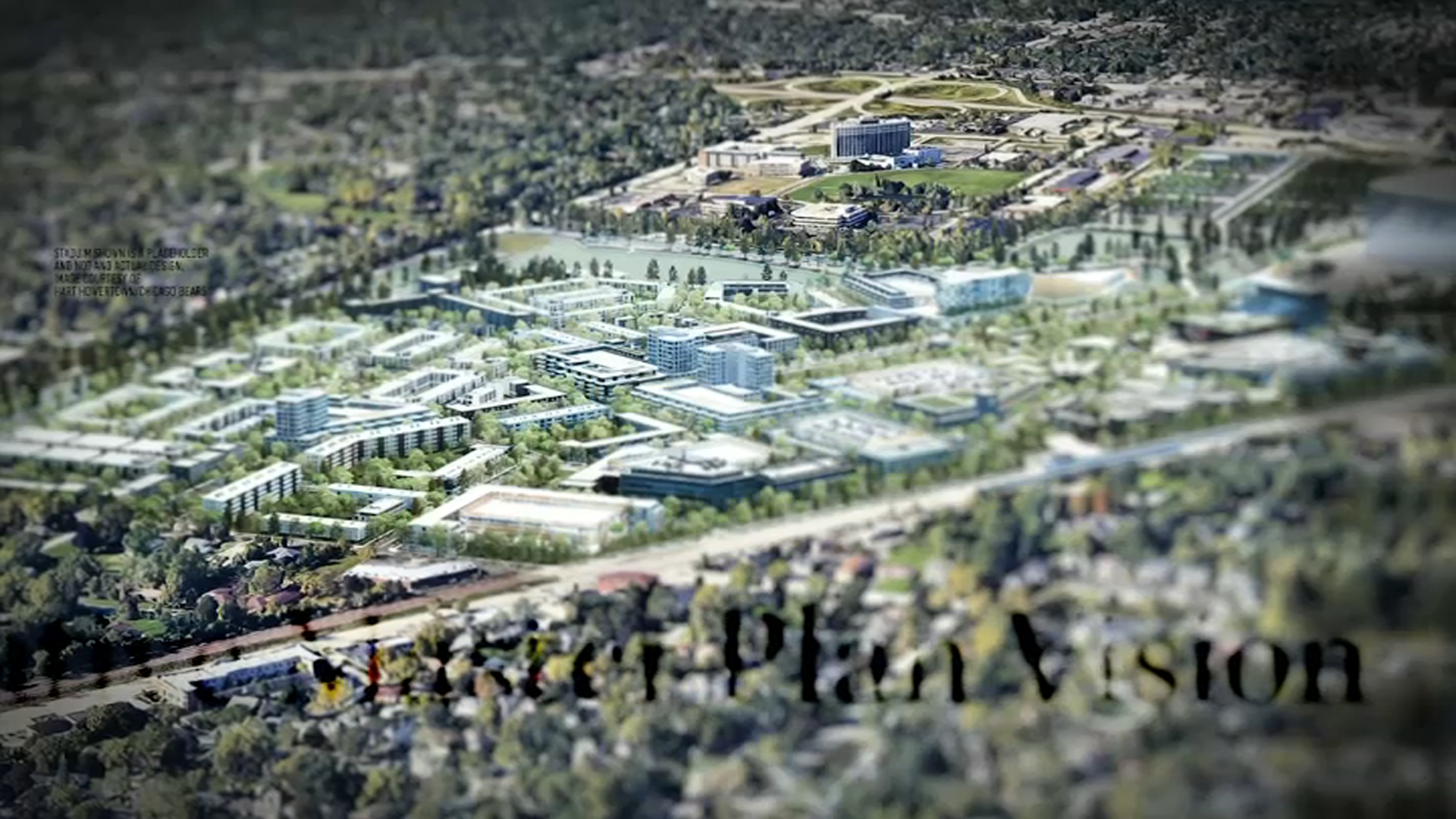As the Chicago Bears pursue the possibility of leaving Soldier Field to build a new stadium in Arlington Heights, what might that look like? And who will end up footing the bill? If you were looking to find a parallel to what the team is hoping to create, perhaps the best comparison is SoFi Stadium, the two-year-old home of the Los Angeles Rams and LA Chargers.
“Keep in mind, that Inglewood site is the size of Vatican City. The stadium is just one part of it. There’s retail. There’s commercial. There’s residential. All of that is going up,” said NBC Los Angeles sports anchor Fred Roggin, who emceed the stadium’s groundbreaking and has reported on it since Rams owner Stan Kroenke first announced his intention to bring the team back to Los Angeles - and build a stadium complex with his own money.
“In the state of California, we don’t give public money to build stadiums – simply don’t do that,” Roggin said.
And what Kroenke built is like nothing you’ve ever seen. The stadium’s 2.2-million pound video board is viewable from both sides, the first of its kind and the largest ever created in sports.
There are four locker rooms, opulent lounge areas and 260 luxury suites, including several right on the field.
While SoFi has a roof, it’s not a dome – the building is open on the sides. And that roof doubles as a giant video screen, viewable by passengers on final approach into nearby LAX.
Public estimates put the cost of SoFi at $5 billion, which built a stadium that seats 70,000 fans, expandable to 100,000, making it the largest in the NFL. It’s already seen one Super Bowl earlier this year and will host the College Football Championship in January.
“The stadium is an amazing stadium – I think one of the crown jewels in the world. But this was truly a real estate vision for a sports and entertainment district,” said Rams Chief Operating Officer Kevin Demoff, who was a key player in orchestrating the team’s move back to Los Angeles and the execution of that vision.
Like the site the Bears are eyeing in Arlington Heights, SoFi Stadium was built on roughly 300 acres once occupied by a shuttered racetrack, Hollywood Park. And as is the Bears’ announced intention, the California development features a performance venue, future retail space, and over 2,000 new residential units.
Feeling out of the loop? We'll catch you up on the Chicago news you need to know. Sign up for the weekly Chicago Catch-Up newsletter.
And there’s one more parallel to the Bears' vision. While the team’s name says Los Angeles, the Rams’ stadium is actually in a suburb: Inglewood, California.
Inglewood Mayor James Butts says his city will eventually put in about $250 million worth of infrastructure for the Hollywood Park development. But Kroenke paid for it up front and the city will not have to pay it back until substantial tax revenues start to roll in.
“At a time that we receive more than $25 million in a given year in taxes generated by the development, that overage of $25 million will go towards the retirement of that infrastructure debt, which means we paid for it with money we never had,” Butts said.
His advice to Arlington Heights? Do your homework – and don’t be afraid to walk away.
“I don’t know their numbers, so I can’t tell them whether it’s a good deal or a bad deal. But what I can tell you is this: if the numbers don’t work, if you can’t see a way forward that you’re going to break even within five years as a city, it’s a bad deal,” Butts said.
So what is Arlington Heights prepared to offer?
“This development, if the Bears do come, has to be a net fiscal positive for the village, and that any financial assistance we provide is only under a ‘but for’ situation where the development could not proceed but for some kind of public-private partnership,” said Arlington Heights Mayor Thomas Hayes.
Hayes said his community is prepared to discuss funding for infrastructure like roads and sewers – but nothing else.
“It’s actually part of our predevelopment agreement that we just signed a few weeks ago, that the Bears will not seek any public assistance for construction of the stadium itself, and that’s very clear,” he said.
The Bears do not have Kroenke money, so don’t expect a $5 billion wonder in Arlington Heights. In fact, even the Rams say you shouldn’t, advising the McCaskeys not to build a stadium mirroring theirs – but rather, one that Bears fans can call home.
“Don’t try to be anybody else,” Demoff said. “Try to be what have made the Chicago Bears one of the league’s greatest franchises for nearly a century. That’s where they should put their focus.”
The Bears – who are under contract but have not finalized the purchase of the Arlington Heights land – declined a request for an interview, but in a previous statement said that if they do move forward, they would seek no public funding for direct stadium construction and called their vision for the property “one of the largest development projects in Illinois state history.”



